News Archive
Filter By
- Abyssinian ground hornbill
- Addax
- Aldabra tortoise
- Allen's swamp monkey
- Alpaca
- American alligator
- American avocet
- American bison
- American flamingo
- American wigeon
- Andean bear
- Aquatic caecilian
- Arapaima
- Asian elephant
- Asian small-clawed otter
- Asian water dragon
- Australian snake-necked turtle
- Bald eagle
- Baltimore oriole
- Barred owl
- Bearded emperor tamarin
- Beaver
- Bennett's wallaby
- Binturong
- Black-and-white ruffed lemur
- Black-crowned night heron
- Black-footed ferret
- Black-tailed prairie dog
- Black-throated blue warbler
- Blue-billed curassow
- Blue crane
- Bobcat
- Brown pelican
- Bufflehead
- California sea lion
- Canvasback
- Cedar waxwing
- Channel catfish
- Cheetah
- Chicken
- Chinese alligator
- Chinese three-striped box turtle
- Clouded leopard
- Collared brown lemur
- Common raven
- Common yellowthroat
- Corals and sea anemones (anthozoa)
- Cow
- Crocodile monitor
- Cuban crocodile
- Dama gazelle
- Degu
- Dunlin
- Eastern corn snake
- Eastern indigo snake
- Eastern newt
- Eastern red-backed salamander
- Eastern screech-owl
- Eld's deer
- Electric eel
- Emperor newt
- Fennec fox
- Fishing cat
- Gaboon viper
- Geoffroy's marmoset
- Gharial
- Giant leaf-tailed gecko
- Giant panda
- Goat
- Golden-headed lion tamarin
- Golden lion tamarin
- Gray seal
- Gray wolf
- Green tree python
- Grevy's zebra
- Guam kingfisher (sihek)
- Guam rail (ko’ko’)
- Guinea pig
- Harbor seal
- Hartmann's mountain zebra
- Hawk-headed parrot
- Hellbender
- Home's hinge-back tortoise
- Hooded crane
- Iranian fat-tailed gecko
- Japanese giant salamander
- King vulture
- Komodo dragon
- Kori bustard
- Kunekune pig
- Land hermit crab
- Larger Malay mouse-deer
- Lemur leaf frog
- Lesser hedgehog tenrec
- Lesser kudu
- Lion
- Loggerhead shrike
- Long-tailed chinchilla
- Long-tailed salamander
- Maned wolf
- Meerkat
- Miniature donkey
- Naked mole-rat
- North American porcupine
- North American river otter
- Northern Luzon giant cloud rat
- Northern pine snake
- Northern pintail
- Northern red salamander
- Northern snakehead fish
- Northern tree shrew
- North Island brown kiwi
- Norway rat
- Orangutan
- Orchard oriole
- Ossabaw Island hog
- Ostrich
- Ovenbird
- Pallas's cat
- Panamanian golden frog
- Patagonian mara
- Persian onager
- Philippine crocodile
- Prehensile-tailed porcupine
- Prevost's squirrel
- Przewalski's horse
- Pygmy slow loris
- Red-crowned crane
- Red-fronted lemur
- Red-rumped agouti
- Red-winged blackbird
- Red knot
- Red panda
- Red River hog
- Red ruffed lemur
- Red wolf
- Ring-tailed lemur
- Ruddy duck
- Schmidt's red-tailed monkey
- Scimitar-horned oryx
- Screaming hairy armadillo
- Semipalmated plover
- Semipalmated sandpiper
- Siamang
- Sitatunga
- Sloth bear
- Southern lesser galago
- Southern swamp sparrow
- Southern tamandua
- Spider tortoise
- Striped skunk
- Tanagers
- Tentacled snake
- Tiger
- Titi monkey
- Turkey
- Twig catfish
- Two-toed sloth
- Vietnamese mossy frog
- Virginia opossum
- Von der Decken's hornbill
- Western lowland gorilla
- White-cheeked gibbon
- White-faced saki
- White-naped crane
- White-nosed coati
- Whooping crane
Displaying 976 - 1000 of 2363 articles.
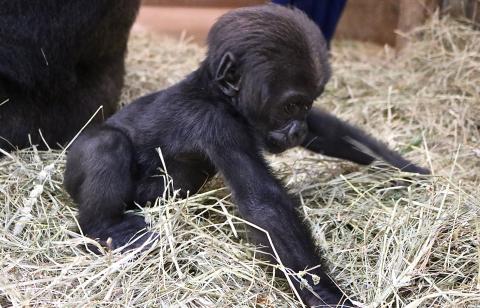
#GorillaStory: Moke and Kibibi
Western lowland gorilla Moke is learning to walk! This week, he spent some quality time with 9-year-old Kibibi.
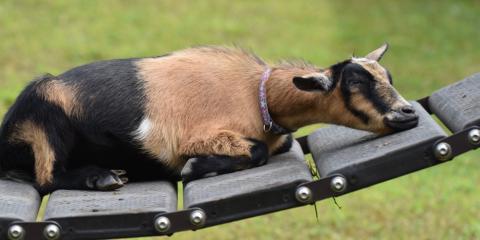
5 Surprising Kids’ Farm Animal Facts
Think ewe know all there is to know about goats, pigs, donkeys and moooo-re? These Kids’ Farm animal facts may have you stumped!
Critically Endangered Scimitar-horned Oryx Born at the Smithsonian Conservation Biology Institute
A scimitar-horned oryx calf was born at the Smithsonian Conservation Biology Institute in Front Royal, Virginia, June 30. The calf was conceived by artificial insemination with sperm that was cryopreserved (frozen) in 2011, and the calf’s mother did not need to be anesthetized for the procedure — a...
Elderly Przewalski’s Horse Dies at Smithsonian’s National Zoo
Rose Marie, a 31-year-old Przewalski’s horse at the Smithsonian’s National Zoo, was humanely euthanized July 6, due to her declining health and quality of life. She was one of the oldest Przewalski’s horses in the world.
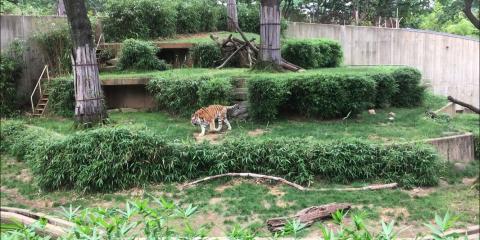
A Day in the Life of a Great Cats Keeper
Training tigers to show their teeth and preening prickly porcupines is all in a day’s work for keeper Dell Guglielmo!

New at the Zoo: Bennett's Wallabies
Meet Victoria and Adelaide — the new Bennett’s wallabies at the Zoo! Get the scoop on the Small Mammal House’s marsupials from curator Steve Sarro and animal keepers Ashton Ball and Esther Wray.
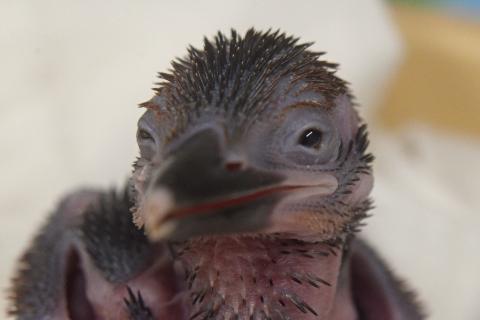
Guam Kingfisher Hatches at Smithsonian Conservation Biology Institute
A female Guam kingfisher, a brightly colored bird and one of the most endangered bird species on the planet, hatched at the Smithsonian Conservation Biology Institute (SCBI) in Front Royal, Virginia, May 17.

Field Notes: Myanmar's Flying Foxes
SCBI scientists are using innovative GPS tracking collars to better understand the flight patterns of Myanmar's flying foxes.
Giant Panda Mei Xiang Will Not Give Birth
A team of reproductive scientists, veterinarians and animal keepers at the Smithsonian’s National Zoo and Conservation Biology Institute have determined that giant panda Mei Xiang (may-SHONG) will not give birth this year.
Smithsonian Scientists Discover Male Rutting Calls Increase Female Ovulation and Synchronize Reproduction in Serengeti Wildebeests
Smithsonian Conservation Biology Institute scientists have provided the first experimental evidence that male western white-bearded wildebeests’ rutting vocalizations are a key driver of the tightly synchronized breeding and calving in the species.
New Virus Discovered in Myanmar by Smithsonian Conservation Biology Institute's Global Health Program
Smithsonian and University of California, Davis scientists and partners have discovered a new coronavirus in a species of bat in Myanmar as part of routine surveillance for the PREDICT project, funded by the U.S. Agency for International Development. A second virus was also detected in Myanmar for...
Golden Lion Tamarin Infant Dies at Smithsonian’s National Zoo
One of the golden lion tamarin infants born at the Smithsonian’s National Zoo last week died this morning, July 3. It appears that the infant fell off one of its parents this morning.
Two Golden Lion Tamarins Born at Smithsonian’s National Zoo
The Smithsonian’s National Zoo is celebrating the birth of two endangered golden lion tamarins. The monkeys were born June 29 to first-time parents Mo and Izzy and appear to be healthy.
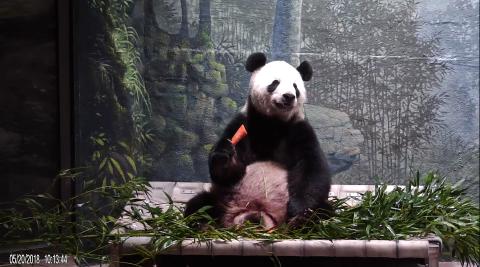
Tian Tian and Bei Bei Have New Hammocks!
The exhibits team built the hammocks from sturdy firehose and installed them. There has been a hammock in Bei Bei’s enclosure for several years, but it was starting to show some wear-and-tear as it’s been a favorite resting spot for him and Bao Bao when she lived there.
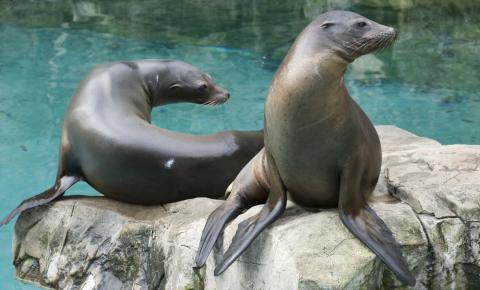
Dare to Compare: What’s the Difference Between Sea Lions and Seals?
From whiskers to flippers and a penchant for fish, seals and sea lions have a lot in common. So how can you tell these pinnipeds apart?
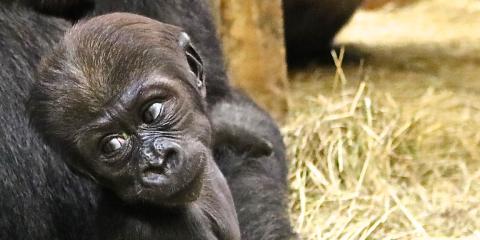
#GorillaStory: Moke Takes His First Steps
Read the latest update on the Zoo's 10-week-old western lowland gorilla, Moke, and watch a video of him trying to take his first steps!
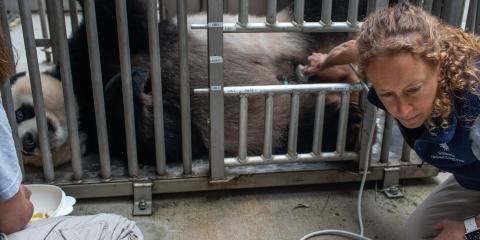
Giant Panda Update: Panda House Closed for Pregnancy or Pseudopregnancy
Beginning today, June 24, the David M. Rubenstein Family Giant Panda Habitat will be closed to keep a quiet area around female giant panda Mei Xiang’s den.
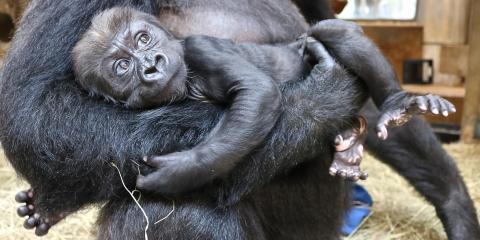
#GorillaStory: Just Like Mom
Primate keeper Melba Brown says 9-week-old western lowland gorilla infant Moke is taking in all of the sights, sounds and scents around him.

Subtle Behavioral Changes in Mei Xiang
The panda team has started seeing more pronounced behavioral changes in Mei Xiang, which is normal and expected for a pregnant or pseudopregnant giant panda. Overall, she is spending more time sleeping and is less responsive to the keepers.

Bird Friendly Coffee is a Win for Conservation at Charity Auction
Smithsonian Bird Friendly® coffee was the big winner at a recent online charity auction.
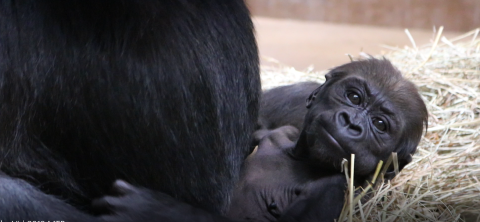
#GorillaStory: Moke the Explorer
Today, Moke turns two months old! He is just as curious as ever, but now he is becoming bolder and more interested in those around him.
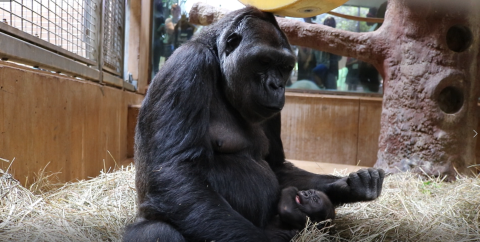
#GorillaStory: Moke is Teething
In the past two weeks, our western lowland gorilla infant, Moke, has sprouted two new teeth! When he was five weeks old, the primate team observed two lower incisors break through his gums. Now, at 7 weeks old, he has two new upper incisors!
